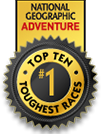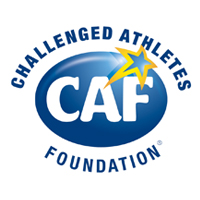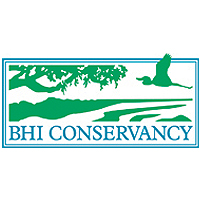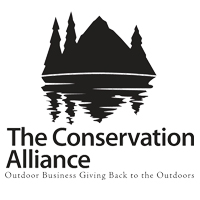Trials and Travails of Team Coonhound and the 2004 Badwater Ultramarathon, or, What I Did on My Summer Vacation
2004 official finisher
Team Coonhound, as we came to call ourselves, was comprised of 9 folks—yours truly in the role of runner, and Carolyn Campbell, Mark Briggs, Harpo Davis, Ron Hershey, David Hodges, Jerry Riddick and Matt Skroch as crew. Harp and Hersh are college buds from my first undergraduate tour of duty, and the rest of the outfit are Tucsonans. Without a good crew and a well supplied crew vehicle, you might as well not even show up to this race, the Badwater 135. We had both; in fact, we probably had one of, if not THE best crew on the course this year. In addition, we also had Al Arnold, the very first person to ever make the crossing from Badwater to the top of Mt. Whitney (in 1977) in the role of Honorary Crew Chief and Spiritual Leader. While Al was not able to attend the race this year, he was clearly there with us in spirit. Carolyn called him once or twice during the race, and he called to congratulate us the morning after we finished.
The race goes off in 3 flights—6, 8 & 10 AM—and starts at Badwater, in Death Valley, the lowest bit of dry dirt in the western hemisphere. We were slotted into the 8 AM start, which was ideal—early enough to still be coolish at the start, late enough that we could get a good night’s sleep. At the start I was pestering the crew with last minute reminders and advice, and it was suggested that I go find something else to do, away from our crew vehicle (a white mini-van Jerry had rented in Las Vegas) while I waited for the call to the start line. So I decided to make sure that I started from the lowest point possible, and walked out across the Badwater salt flats to what appeared to be the low point, maybe ¼ mile away. When I turned around, all the other runners and Chris Kostman, the race director, had gathered by the “282 ft. below sea level” sign for a photo session and so I had to actually run back in to make the picture.
After more photos and a couple of quick interviews with guys with TV cameras, we lined up, listened to the National Anthem, then counted down the last 10 seconds together, out loud, and we were off. The temperature was 98 F. The first couple of miles were nicely shaded by the truncated alluvial fans hanging off the side of the Black Mountains, and then, as we came out into the sunshine, the race began in earnest.
The way we progressed was the crew vehicle with 3 crew members (Matt, Harpo & Jerry at this point—the rest of the crew was resting up to take the later shift) would leapfrog ahead one to two miles, and then pull off the side of the road and wait for me to catch up. As I approached, a crew member would run up the road a ways to meet me and find out what I needed and to grab my water bottle(s). A second crew member would meet me soon after with a lightweight pump sprayer and spray me down, and then I would get the food, drink and/or clothing items I requested as I passed on by the vehicle. If I wanted a lot of stuff, needed to talk to the crew or wanted a little break, I would pause for a minute or two while we took care of business.
While the Badwater Road winds along the foot of the Black Mountains of the Amargosa Range on the east side of Death Valley, Telescope Peak rises straight up to over 11,000 feet in the Panamint Range on the west side of the valley. On top are ancient bristlecone pines and temperatures that drop close to freezing at night in July. The 11,300 feet climb from valley floor to mountain summit represents the greatest direct vertical relief in North America. It was interesting to gauge our progress by tracking the location of Telescope Peak as we crossed the valley floor. Surely and steadily it moved from off my left shoulder, to somewhat behind my shoulder and then out of my field of vision all together. We were making progress.
I ran 11 minute miles more or less all the way to the first time station at Furnace Creek, 17.4 miles (-165 feet elevation, 112 degrees F). We arrived there in 3:13 (11:13 AM), about 45 minutes ahead of our projected time and caught the relief crew by surprise. The only walking I had done up to this point was on one fairly steep hill, and the thinking there was to save my quadriceps muscles for later in the race. As all was in good order psycho- and physiologically, I paused only briefly at the Furnace Creek time check station to check our place (16th not counting the 10 AM starts), while crew members worked to get checked out of the hotel room and into the crew vehicle.
Past Furnace Creek there is a separate paved multi-use path for a few miles, and I was perhaps 3⁄4 of a mile along this section when I heard footsteps sprinting up behind me. It was Mark Briggs, who had volunteered to pace me from Furnace Creek to Stovepipe Wells (from the start to Furnace Creek pacers are not allowed). I asked Mark why he ran to catch up rather than catching a ride with the crew vehicle which had just gone by. He claimed, “that would have been cheating.” His goal was to cover the entire 24 miles through the hottest part of the day on foot, and he was not to be denied.
A mile out of Furnace Creek, the car thermometer read 114 F. Jerry had checked it against thermometers in Las Vegas as he drove over to Death Valley and found it in good agreement. Nevertheless, it is likely that the car thermometer read a few degrees hotter than the “official” National Weather Service temperature for any given time, as a car thermometer is reading the temperature closer to surface than is the NWS thermometer (these are standardized at, I believe, 2 meters above the surface). Near the surface, the layer of air becomes super heated by the radiation back up from the surface, and this is exacerbated by the black asphalt of the road. Because the temperature we were actually experiencing was in the region measured by the car thermometer (not 2 meters up as measured by the NWS thermometer), the car temps were likely a fair approximation of what we experienced.
The key to successfully running across Death Valley during the day in the middle of July is to make it appear to your body that you are not really doing that. This can be accomplished via evaporative cooling—keep your surface wet and you keep your surface cool. I quickly recognized that getting sprayed every mile or two was not enough to keep me wet and thus cool the entire 10-15 minutes between visits from the crew. In addition, I started the race in a Cool Max shirt, which is a thin, synthetic weave that wicks moisture quickly away from the body and evaporates it to the outside air. This happens so rapidly, though, that the shirt itself does not stay cool for very long (thanks to KJ Glover for pointing this out over a year ago). Thus, I changed into a long sleeve cotton shirt that Harpo had brought along, and this worked perfectly. In addition, after the first few miles, I carried two water bottles with me the whole time—one for drinking either water or a Cytomax and Accelerade mix (fancy sports drinks), and a second for water to douse myself with periodically. For the one mile segments we were now doing, this worked out perfectly—both bottles were emptied just as I rolled up to the crew vehicle time and again.
Nevertheless, there were two body parts that remained all too aware that they were still in Death Valley: my left foot and my right foot. Around mile 25, with the car thermometer registering 120 F, I felt a sore spot develop at the base of one of my toes. I was a little surprised as I have never blistered from running in the past. We pulled the shoes off and had a look, and indeed, found a small blister forming. I put some medical tape—it’s not overly sticky so wouldn’t pull the skin off when I had to remove it later—across the sore spot to reduce the friction. But after putting my shoes back on I discovered that this was not the only sore spot—the tip of my second toe was sore, and a I had a whole band of spots across the ball of each foot. Blisters on the balls of the feet were evidence that the bulk of the blistering was not from friction but rather from the heat conducting directly from the pavement through the soles of my shoes to my feet. In other words, I was burning my feet. In addition, it was clear that my feet had swollen as they were rubbing against the ends and sides of the shoes I was wearing, shoes I’d trained in for the past two months and that fit well. I took the shoes back off, taped up all of the sore spots and then tried on a different pair of running shoes. These were no better, and so I got out my trail running shoes, which I have always complained fit me like shoe boxes rather than shoes. I also put on a pair of toe socks (like gloves for the feet) which reduce the amount the front of the foot can slide around inside the sock. The big trail shoes proved to be the ticket, and with a few awkward steps getting up enough momentum to get over the initial pain, I was off again running.
Not long after the blister debut, I started to have trouble getting food down. The crew had been doing a terrific, if somewhat overzealous job of plunging as many calories down my throat as I could manage, but between the heat, the exertion and the volume of food and liquid that I had been ingesting, my stomach began to rebel. Our food supplies consisted of various items that maximized calories, carbohydrates and electrolytes while minimizing the calories required to digest them. In addition, I needed everything to be at least palatable if not necessarily appetizing. Included in our mobile pantry were cans of Boost and Ensure, gel packets (a high carb sugary formulation not unlike cake frosting), cookies, honey dew, cantaloupe and water melons, turkey and swiss sandwiches, PB&Js, boiled potatoes, potato chips, candies, vegetable and chicken soups, plain white bread, breakfast cereal and soy milk, and the aforementioned Cytomax and Accelerade sports drinks. At one time or another along the route I ate at least a little bit of everything listed except for the boiled potatoes.
But now, 29 miles out, I could not eat another thing, and I was feeling a little light-headed. I decided to stop running and walk a couple of miles and told the crew to take all that food they were trying to force down my throat and eat it themselves if it was so damn good for you. I was only drinking water now, also, and got myself sprayed down extra well. Mark and I walked perhaps three miles in a row, and it all bottomed out when I agreed to eat a Gel pack and, if a mouthful of gunk the consistency of cake frosting wasn’t bad enough, I accidentally scraped the edge of the packet against the back of my throat, perilously close to the auto-gag reflex sensor. I spent a full 10 minutes locked in mortal combat with my stomach which was hell-bent on emptying it all out right there on the side of the road and starting all over again. But finally things started to settle down, I agreed to another bottle of Cytomax and we were off and running again.
We reached Stove Pipe Wells, 41.9 mi. from the start and 5 feet above sea level, in 8 hours 47 minutes (a 12:36 min/mi. average pace). Mark had been doing so well over the 24 miles we had just covered I was sure he was going to want to continue, but when I suggested he keep going he looked at me like I was nuts or something. At the Stove Pipe Wells hotel I took my shoes off, peeled the medical tape off my feet, then walked into the swimming pool in my shirt, shorts and sunglasses and enjoyed a couple of easy strokes and an underwater plunge. Fully refreshed, I wandered over to our hotel room. My stomach was completely settled now, and I was extremely hungry, so I ate some soup while Carolyn made me a bean and cheese burrito for the road. After I’d re-taped my feet the crew was in a deep discussion. As the mysteries of crew logistics were well beyond my ken, I headed off on my own, walking briskly, as the road was now uphill.
Dean Karnazes, who was eventually to win the race, had passed us a couple of miles before Stove Pipe Wells. Chris Bergland, who last year led the race for 112 miles only to finish 4th, and who had just 7 weeks ago broken the 24 hour treadmill record (153.76 miles), was hot on our tail into Stove Pipe Wells, where he passed us. While I was in the pool at Stove Pipe, Pam Reed, the Tucson woman who had won this race the previous two years and finished 4th this year, also went by. Monica Shultz, a Canadian woman who finished 3rd both last year and this year, now passed us as we started the climb out of Stove Pipe Wells and up Townes Pass. (All of these top runners had been in the 10 AM start.)
After Stove Pipe Wells the course leaves Death Valley and climbs 17 miles up to 4,995 ft. Townes Pass, then immediately begins the “bone-crushing descent” into Panamint Valley—a 9% grade over 12 miles with 3,400 ft. of elevation loss—to the 1,600 ft. valley floor. When we left Stovepipe around 5:00 PM, the temperature was 120 F. By 7:00 PM we had covered 5 miles, were about 1,800 feet above Stove Pipe Wells and the temperature had dropped to 111 F. After 4 ½ hours of temperatures 120 or above, this was getting downright pleasant, and Carolyn commented to Matt, “It’s only 111 degrees!” to which Matt replied, “Nice!” and then they both started laughing and shaking their heads, realizing that never before had they ever thought 111 F might be considered pleasant.
David walked with me for a time, but the heat was too much for him and he was replaced by Matt. The sunlight at last began to fade and the Panamint Range to our left passed from orange to purple to gray. Matt and I put on reflective vests and blinking red LED tail lights, and Matt strapped on a four LED headlamp and I carried a seven LED flashlight. Around mile 53, 11 miles out of Stove Pipe, the temperature finally dropped below 100 degrees. It was 10:00 PM and we were around 2800 ft. Our notes say “finally ate gel; stomach still raw,” but I don’t recall having stomach problems on this stretch, other than occasionally finding a given food item unappetizing as is most always the case with gels.
Another couple of miles up the hill I recognized Chris Bergland ahead, and started to feel pretty good that we were actually gaining on one of the top competitors in the race. As I caught him he turned around and we started chatting, and it turned out that he hadn’t fully recovered from his 24 hour treadmill run a month and a half earlier, and was about to drop out of the race. He just didn’t have it in him this year, he said. He had never dropped out of a race before, but his crew was pretty happy with him for making the decision because it seemed clear that he was not going to be able to compete this year and was only risking injury. He and his crew then offered us anything we wanted from their supplies as they were not going to need them nor have room on the plane to fly it all back to New York with them. We picked up some Pedeolite Pops, a couple of bottles of Pedeolite (a children’s electrolyte solution), a couple of turkey sandwiches, and some pretzels. We also checked my weight around this time, and I had dropped to 174 pounds.
At the top of Townes Pass (11:03 PM, mile 59) we took a break where it was nice and cool, in the low 80s. After adjusting my shoes, eating a little bit and getting interviewed by yet another guy with a TV camera (about the 4th time since the start), we headed off down the grade to Panamint Valley. I ran for the next two miles with Ron now pacing me on his mountain bike, but then I became concerned that I would eventually ruin my quadriceps if I ran too much down hill on the 9% grade, especially given that my quads were already kind of rubbery and sore. So we backed off to a walk, and passed the 67.5 mile half-way point around 1:30 AM . I felt obliged to quote Eric Clifton from “Running on the Sun,” the 1999 Badwater documentary: “’…now I just have to do it all over again.’”
I continued walking (and Ron riding) until we were a few miles from the bottom of the valley, where the grade eased considerably and I could run again. It took some time to warm up my quads and get my blisters used to being mashed, but once everything loosened up I was able to go at a pretty good clip and peeled off 3 or 4 miles at a 9 – 10 minute mile pace until we had crossed the low point of the valley. While it looked like just another mile or two to go, an hour of walking was required to cover what turned out to be the 4 miles up to the Panamint Springs “Resort,” and the third time station (mile 73, 3:03 AM Tuesday, 19:03, elev. 1,970 ft.). We checked my weight upon arrival and it was good news as I was now at 175 pounds, and Leon, who was working the time station, told us we were in 16th or 17th place.
The Panamint Springs “Resort” (really just an isolated motel and bar taking advantage of good spring water) had a runner hospitality cabin where competitors could nap, shower and use a real toilet. I took advantage of the bathroom amenities including a very refreshing shower and then put on the same sweaty stinky clothes I’d just taken off. A nurse in the main part of the hospitality cabin offered to do a full blown blister tape-job on my feet. I wasn’t sure if I really needed that, and when I took off my shoes to show her my feet she was actually surprised at how good they looked. The blisters under the calluses on the balls of my feet were not evident, and the other little blisters at the base of my toes were pretty minor. I decided to forego the professional taping and headed back out front to where the crew was beginning to wonder if I had fallen in. Over 45 minutes after we had arrived we left the “resort” and headed up the hill toward Father Crowley Point. Ron claimed his hands were starting to hurt thanks to all the braking he had to do coming down from Townes Pass, so he passed the bicycle to Jerry to pace me through the morning hours up into the Argus Range .
Panamint Valley ends in a massive box canyon of volcanic sediments 8 or 9 miles north of where we had crossed the valley on Rt. 190 a few hours before. Now we were climbing up the side of that box canyon into the Argus Range on a fairly narrow, switch-backing road that was often constrained by a guard rail on one side and a rock face on the other. Fortunately, about the only traffic before dawn was vehicles associated with the race and so most cars were traveling at reasonable speeds and gave us a wide berth. I have little memory of what Jerry and I discussed on that hike out of Panamint Valley other than it was all upbeat and wonderfully distracting and made a potentially mind-numbing, torturous climb pass with ease.
We arrived at Father Crowley Point which overlooks the box canyon at 6:40 AM (mile 80, 4,000 ft.) shortly after the sun’s first rays had breached the shoulder of 11,000-plus foot Telescope Peak back on the west side of Death Valley. I was weighed again (174 pounds) then sat down to a bowl of breakfast cereal and milk, which was probably the first normal thing I had done in nearly 24 hours. Back on the road the temperature was into the 70s. While still climbing from time to time, it was rolling now and I was able to run for a few short stretches. Around mile 85 we got our first view of our destination: the Sierra Nevada. At the same time, immediately to our left, were the first Joshua trees, and to our rear, Telescope Peak had disappeared for good. Less than a mile later we had also passed out of Death Valley National Park.
Matt, Carolyn and Mark arrived sometime after daybreak to relieve Jerry, Ron and Harpo. David arrived later, but then went in to Lone Pine for some blister spray and ice. We reached the fourth time station, an intersection known as the Darwin turn-off, at 10:11 AM (mile 90, 5,050 feet, 26:11:00). The temperature had bounced back to 90 F and about a mile earlier I had felt one of my blisters pop, right at the base of the middle toes on my left foot. Overall, the blisters, which had remained about the same since first appearing back in the middle of Death Valley, had become more painful over the past 10 miles, my quadriceps muscles were, of course, no better, and when next I met the crew I commented to no one in particular and whoever would listen that there was no way I was going to be able to do any more running. In other words, we had 45 miles of walking ahead of us and given the impending fatigue, finishing in 48 hours, my primary goal, was starting to look a little sketchy. (All runners who finish in 48 hours or less receive the coveted Badwater belt buckle.)
I headed back out onto the road with Matt to pace me. Back at the van, Carolyn went out to find a bush and Mark did some math to figure out what pace we would need to finish in under 48 hours. Carolyn climbed back into the van, looked over Mark’s figures, then looked up and Matt and I were nowhere in sight. “Hey,” said Carolyn, “we better get going.” After driving for over 2 miles they hadn’t found us, and Carolyn thought that they somehow had missed us and should probably turn around. They pulled over and another vehicle that had been tailing them also pulled over, and a guy from 60 Minutes, who was doing a piece on Pam Reed, came up to them and said, “Did you know that Bruce started running? He was worried that you wouldn’t know where he was.”
When I’d gotten back out on the road with Matt, I starting to think about the 48 hour goal, and decided I needed to knock off a few miles, so started to run. Now, this so-called “run” was initially only a little faster than a walk, and was probably at least as painful to watch as it was to experience. The pain from the blisters on my feet was overcome in the first 100 yards or so, but the muscle pain from the tight quadriceps, calves, and other fibrous tissue that keeps one ambulatory was another matter all together. After about 5 minutes of the creaking, old-man chicken stepping along, I picked out a low point in the road ahead and told myself I would run to there than call it quits. We got to that point and I realized that now the road was just flat, not uphill as I had thought, so I picked a bush another 100 yards along to run to, and when we got there I finally went back to a walk. Well, it was then that I noticed the vehicle with the TV camera pointed at us up ahead. “Matt,” I said, “we probably ought to put on a good show for the camera,” and I went back into my rickety running gait. We passed the vehicle with the camera and then, as if by magic, my legs began to loosen up and the pain throughout them steadily decreased until I felt fine and I began to pick up the pace. I could hear Matt behind me starting to breath heavily and actually drop back a few steps. “This is great!” I thought to myself, and kept cranking along.
About a mile after picking up the pace, a vehicle pulled up next to us and a guy leaned out the window. “Bruce,” he said, “what are you doing?” I looked at him, trying to figure out if I knew him since he knew my name, but I didn’t. Then I noticed a sign that said something about 60 Minutes and figured they were with the crew doing the story on Pam Reed.
“I don’t know,” I replied, “I just loosened up so I’m running. My crew has no idea I’m running, and they probably don’t know where we are.”
“You want us to go back and let them know?” he asked.
“Sure. Do you know what our vehicle looks like?”
“No.”
“It’s a white van, with ‘Team Coonhound’ painted on the windows.”
They drove off to find Carolyn and Mark for us, and after Matt and I had covered something like 3 miles or more, both our crew van and the 60 Minutes guys went by and pulled over ahead of us. I think the camera guys did a little road-side interview with me—I actually don’t recall now—and we thanked them for tracking down the crew and Matt and I went back to walking.
Right around mile 100 we dropped through a short steep cut in the hills and entered the far edge of the Owens Valley. While further north the Owens Valley can be quite pretty, the section that Rts. 190 and 136 cut across just north of the mostly dry lake is pretty desolate and depressing. The temperature gets back up above 100 degrees F (105 was the high on the van thermometer), the wind almost always blows hard, sand and salt drifts across the road, the plants are spindly and beaten, and after a 100 mile hiatus, signs of humanity begin to appear with increasing and depressing regularity: junk cars, old mining scars, run down shacks and trailers and roads branching off here, there and everywhere. And to top it all off, I needed to use the facilities again, and there weren’t going to be any available for another 20 miles at the soonest—7 or 8 hours away. Fortunately, we were prepared for such an eventuality, and the crew set up our portable seat and I was able to take care of business in short order and, after a treacherously wobbly hike back up onto the road, was on my way again.
We were in a never ending pass-and-then-be-passed duet with a couple of other runners—Carolyn Smith initially and then later, Thorsten Treptow, a German. It was funny how I would get to know the other runners’ crews in this situation. When C. Smith (as I came to think of her based on the signs on her crew van) was behind me I would reach her crew before her, and they would shout out all sorts of encouragement to me. They even gave me a popsicle one time which was the absolute highlight of that afternoon, although it was so cold at first that it stuck to my tongue. David, who was pacing me then, had to pour some water on it to warm it up so that I could eat it without endangering myself.
The road across Owens Dry Lake to the town of Lone Pine seems unending. While the road itself sapped my physical strength, the environs sapped my psychological strength. By the time the relief crew of Harpo, Hersh and Jerry showed up around 3:00 PM, I think it was becoming clear to my crew that I was crashing, and I requested an opportunity to lie down. I had gone from consistently churning out 17 to 20 minute miles—or less if I ran a bit—to requiring close to 30 minutes per mile, either from a slowed pace or from stopping at the van for 5 or 10 minutes each time. A space was cleared for me in the back of the van and I lay down with my legs out the back and propped up on a cooler. I was able to nod off for a couple of minutes, but then the crew, all seven of whom were standing just outside the uplifted rear door of the van, started to discuss my condition, and I couldn’t help but eavesdrop. They were starting to think—as was I—that I wasn’t going to make the 48 hour goal if my condition didn’t improve. In particular, if I were to nap on the order of hours and then required 30 minutes to go each mile the rest of the way, the belt buckle would likely be lost. I sat up, quoted Rubin Flores from “Running on the Sun:” “Evvverything is fine!” then asked how long I’d been down (“6 minutes,” said Matt), got a couple of water bottles and headed back up the road. Three miles later I had to lie down again, however, and the crew once again stood outside the rear door of the van prognosticating about our finish time. Again I couldn’t really sleep, and again was back on my feet in exactly 6 minutes.
Back on the road, it now occurred to me that I was entirely focused, to a fault, on the 48 hour finish. It seemed as if, if I couldn’t manage that, then it was all over. I hadn’t necessarily been thinking about dropping, but in my mind, not finishing in under 48 hours would have been failure. It was an epiphany when it occurred to me that JUST FINISHING THE DAMN RACE was a fair accomplishment in itself, even if it was in fifty-some-odd hours. Realizing this, a huge burden was lifted from my shoulders. I then relaxed and was able to enjoy the task at hand once again. In addition, it occurred to me that if I was low on energy, I might want to consider jamming down some nutrition, especially carbohydrates. I hadn’t been drinking my Cytomax-Accelerade mix for a while (it had been tough to hold down), and I hadn’t had a gel packet in ages, since before 11:00 AM, in fact (it was now well after 3:00 PM). I requested gels at the next two stops, ate a cookie, had a few cubes of mellon and got a Cyto-Accelerade bottle to drink during the next mile.
In the meantime, Harpo, my old track buddy from Drake, was finally pacing me. I still felt like roasted dog meat, not interested, particularly, in conversing, and talked with Harpo in hushed tones about not much. We covered two miles together, and then, while he went to get me my second gel packet, I continued on and realized that, when alone, I could lock on to the white line along the side of the road and generate a low-energy but relatively high-output walking pace. It seemed like something that I could continue if I could just stay focused. When Harps caught back up with me I told him, “I think I want to go solo for a while,” and I locked back onto that white line and the driving heel-to-toe motion that I had figured I could keep up indefinitely.
Harpo went back to the crew vehicle, kind of bummed out I think since he had only, just at last, gotten his opportunity to pace after looking forward to it for literally months, and told the rest of the crew, “I think I just got fired. I don’t know, maybe it was something I said?” They all discussed it for a bit and then decided correctly that maybe I just needed the time to focus on what I needed to do to keep going.
After about 5 miles of walking solo plus another gel, a can of Boost and a can of chicken soup, my energy level had come back up. The sun was also lowering and the temperature was dropping back down and Harpo came back and joined me for another 3 miles. Mark, Carolyn, Matt and David met us for another crew change near the end of the Owens Valley crossing, and we charged into Lone Pine, elevation 3,610 feet. I reached the time station at the Dow Villa motel at 9:01 PM (37:01:00) and the temp was now down to 92 F. With my feet up in front of the Dow Villa I had a chance to chat with Leon again, and Jeff, guys I knew who were working the race, and to watch the last light of the day fade behind the towering granite teeth of the highest mountain ridge in the lower 48 states.
And so we began the final stretch: 13 miles of road and nearly 5000 feet of vertical to the finish at the Mt. Whitney Portal. Thanks to my energy rebound over the last 7 or 8 miles coming in to Lone Pine, we were all fairly confident that we would make the finish in under 48 hours. It was now just a question of by how much.
It’s kind of funny, but I really can’t remember who was with me going up the mountain. I think I remember Matt there, at least initially, and I think David might have walked with me a mile or two in the early going, and later Ron stepped up, chattering none-stop about whatever crazy thing might enter his head after pounding 2 cans of Red Bull, and then Carolyn showed up around 1:00 AM and eventually walked the final leg with me.
On the big hill it was pretty much the same routine over and over again: reach the crew, stop and chat for a minute, get something to eat and perhaps refill my water bottle, then head on up the road. After a few minutes the crew vehicle would go by, although I rarely noticed that it had and after a while would wonder what had happened to it until I finally asked whoever was pacing if it had already passed. Invariably the answer was, “Oh yeh; a long time ago.” The miles left to go were spray painted in day glow orange on the left side of the road, and our 1 mile stops were offset from these by about an additional quarter of a mile. After we had walked what seemed like well over a mile, I would begin to strain my eyes looking ahead in the dark for the next orange mile mark, and then I would begin to wonder if I had missed it, walked past it already, and then it would appear out at the end of my flashlight beam and I could never believe that it was correctly marked, and even worse, that we still had another 400 yards to go beyond the mile mark before we’d covered just one mile from my last break. At times I wondered if the crew wasn’t conspiring to make me walk further than I realized just to get the race over with. Finally the van would come into sight, still an impossibly long way ahead, and up we’d go until, at last, I could take another short break and then start it up all over again. This is how it went all the way up the mountain, over and over again, 13 times. The only variety was somewhere in the early going: I remember lying down for 10 minutes, although I haven’t been able to find anyone on the crew who can corroborate this.
As you approach the trail head and parking lots at Whitney Portal you first notice the big ponderosa pines standing out from the walls of the enormous granite canyon. With one mile to go, the campground and parking signs begin, and then, quickly, the parking lots start and this is where it gets deceptive. “Aha,” you think, “a parking lot. I’m almost there.” But you are wrong. Not only does this last mile seem like at least 2, but they’ve also inserted parking lots nearly a mile below the trailhead just to fool you into thinking you’re almost to the end. And then, to make matters worse, I thought I recognized the final switchback, around which would be the last turn that would bring me into view of the finish line and the folks hanging out there, waiting for us to finish. I told this to Carolyn, that we were on the last one, and then, after I had clawed my way up and around, I discovered that I was wrong, way wrong, that we still couldn’t even see the final switchback. But there was little else to do except continue to trudge onward, and that we did. Finally it was, indeed, the true final switchback, and so, before I came into sight of the folks at the finish line, I started that creaky old man sore blistered feet and wasted quadriceps chicken-stepping gait, just to make sure everything was warmed up enough that I didn’t do anything stupid like fall over during the final 50 yards, and I ran on around the corner into sight, up the last straight stretch to the two towering ponderosa pines that watch over the finish line of the Badwater 135. I crossed that line at 2:48:58 AM on Wednesday morning in 26th place, 42:48:58 after the start at Badwater back on Monday morning.
After breaking the tape and crossing the line, I got a little choked up but was able to suck it back down before anyone noticed me over there, shedding a private tear. The crew was there except for Jerry, who had passed out from exhaustion back at the hotel, and David, who was also asleep, but expected us not to finish until 4:00 AM or so and claimed he’d see us then, and would bring Jerry. We took a few finish line photos, then drank some Guinness Stout, then loaded ourselves back into a couple of vehicles and drove back down the hill. Another beer at the hotel and a quick rehash of the highlights for David and Jerry and we all went to sleep around 3:30 AM, except for Red Bull Ronny who was still chattering away to anyone who would listen, which in this case meant only himself.








